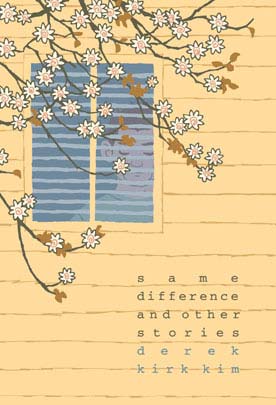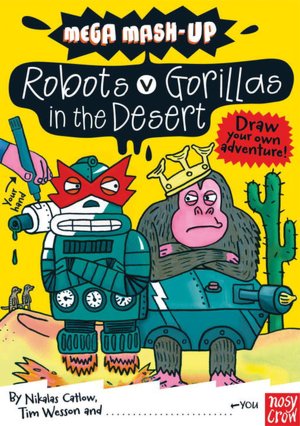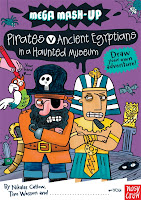
As she proved in Olivia Kidney, SLOB and The Kneebone Boy, Ellen Potter is as master of mystery and setting a scene that is not quite what it seems. From the apartment building full of quirky neighbors that turn out to be ghosts to a brother who is really a sister and a labyrinthine castle that is not what it seems, Potter creates worlds that are familiar and odd, magically mundane. Because of this, I can't think of an author better suited to bring us an updated version of Frances Hodgson Burnett's The Secret Garden. While retellings, prequels and sequels of classic fairy tales abound these days, aside from Neil Gaiman's fantastic 2010 Newbery Award winner, The Graveyard Book, which loosely follows Kipling's The Jungle Book, I can't think of another author who has done a straight update in this way. Burnett's timeless classic, with the hysterical Colin Craven locked up in the middle of a mysterious mansion, lends itself perfectly to Potter's talents as a writer in The Humming Room.
Even though I had just finished rereading The Secret Garden when I started The Humming Room and was on the lookout for similarities, I fell right into Potter's story of Roo Fanshaw without another thought for the story that inspired hers. I was on the lookout for a sour-faced, jaundiced, thin-wristed newly minted orphan and instead found myself treated to a smart twelve year old girl who, while she is "too small for her age" with a "narrow, bony face and a tight, dissatisfied mouth," rusty brown hair and dull green eyes that were "the spent, dull green smoke at the end of a fireworks show," is in no way a Mary Lennox clone. When we first see Roo, she is hiding under the crawl space of the trailer she shared with her father and his girlfriend, who have just been found dead. As she crouches on the cold, bare earth, she surrounds herself with the collection of flowers she has stolen - some made of blown glass, enamel, and lucite. Roo has created a garden for herself with them, with a slim green glass snake resting at her feet. For Roo, hiding, curling herself into a small space and watching the world or pressing her ear to the ground and listening to the earth, is comforting and safe. One of my favorite passages in the book comes when, faced with the enormity of an unknown future, she chooses to focus her attention on Mrs Valentine's admonition not to ask her uncle any questions. Potter writes, "for Roo, who understood things in terms of space, feeling wistful about the past and nervous about the future was too much like standing alone and exposed in acres of open field. It was unsafe. Instead, she tucked her mind into a smaller thought: What was it that her uncle did not want her to ask about?" Like she hides herself away when her world feels unsafe, Roo has found a way to fold up the worrisome thoughts that plague us all and comfort herself by tucking her mind into a smaller thought. What a beautiful piece of writing.
While the mysterious Misselthwaite Mansion and the source of the nighttime wailing are a large part of The Secret Garden, the setting of a moor in Yorkshire is equally important and almost a character in and of itself. Potter sets her story in the 1000 Islands region of the St Lawrence River in New York, which is perfect stand in for a moor. The many islands with their empty but grand summer homes and year-round locals with their own stories and traditions lends itself to the important role of nature in The Secret Garden, which Potter weaves in and out of life on the island in The Humming Room. It seems that Roo's uncle has bought a former sanitarium where sick children were sent to regain their health many many years ago, a place long referred to as Cough Rock Island by the locals. Every great children's book in which the main character is adrift and alone includes a sympathetic character who serves as a guide and protector at times. In The Secret Garden this character comes in the form of Martha who, while trying not to do anything to jeopardize her job or reveal the existence of Colin to Mary, also helps the child come into herself by taking the time to care about her. Martha also introduces her brother Dickon and her very sensible, caring mother, Susan Sowerby, into the story and Mary's life. In The Humming Room the young and sturdy native Violet takes on the role of Martha and, while she doesn't teach Roo the local dialect the way Martha and Dickon inspire Mary to take up the Yorkshire twang, Potter includes enough local lore and funny sayings that Violet learned from her mother and the Donkey grannies of Donkey Island that I almost wished she had a bigger presence in the story. When Roo tells Violet about the boy she spied canoeing down the river, Violet exclaims, "you've caught a glimpse of the Faigne! People can live here for years and never spot him." The Faigne turns out to be Jack, a boy who seems to live on the river and has a heron who always flies on ahead of him, announcing his presence. Jack is as intrigued by Roo as she is by him and the two form a fast friendship which takes Roo away from the loneliness of life on Cough Rock.
The secret garden an the sick boy at the heart of The Humming Room are worth discovering on one's own. As I said at the start of this review, Potter is an author who is ideally suited to retelling The Secret Garden and stamping it with her own unique mark. After the creation of Roo, Potter's skill shines through most when telling the heartbreaking story of the boy and the garden hidden away in the old sanitarium. In fact, if a reader were to come to The Humming Room with no prior knowledge of The Secret Garden at all (impossible, I know) I have no doubt that she or he would read Potter's book and find it fresh and new which, but for a shared skeleton in the closet, it most definitely is.



































